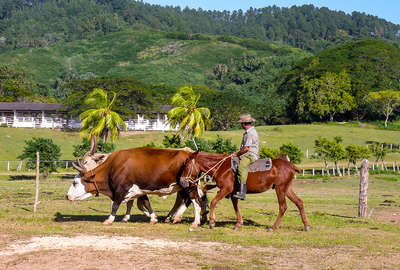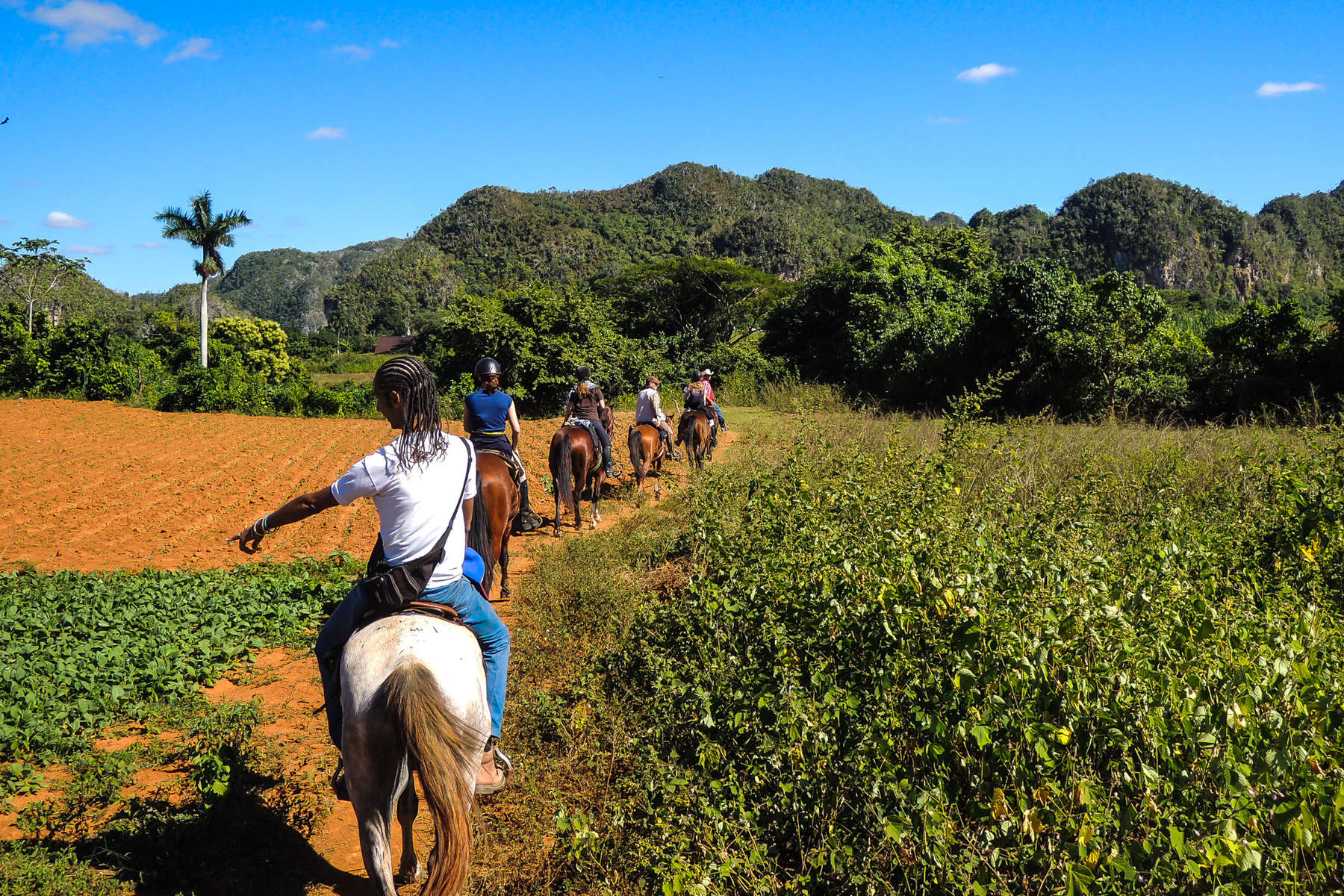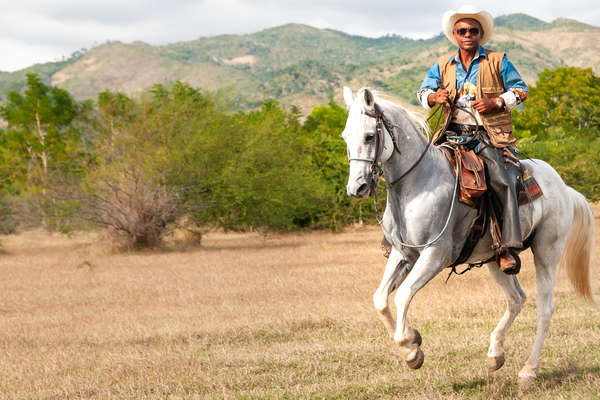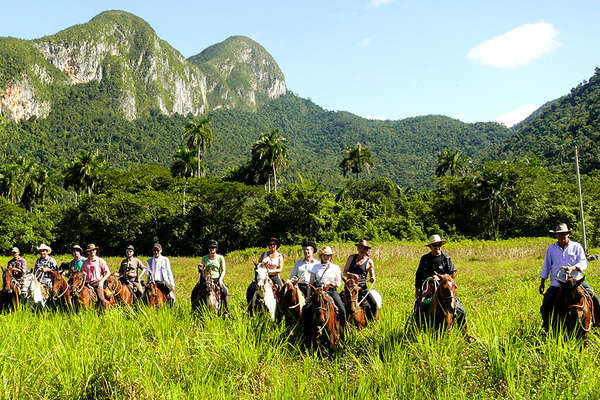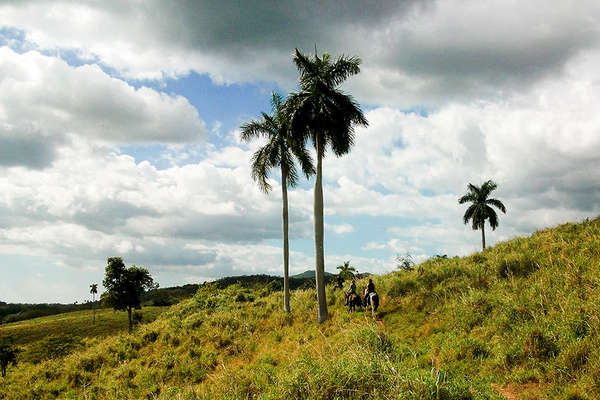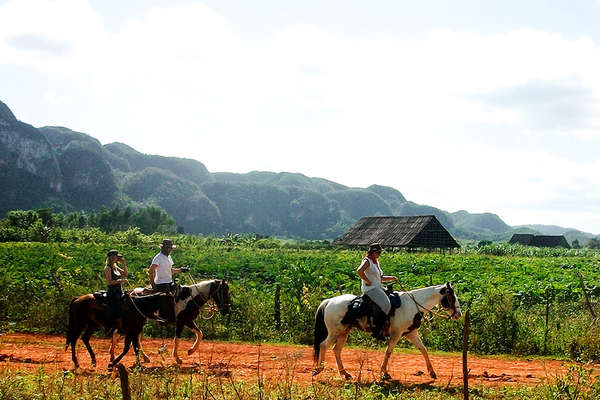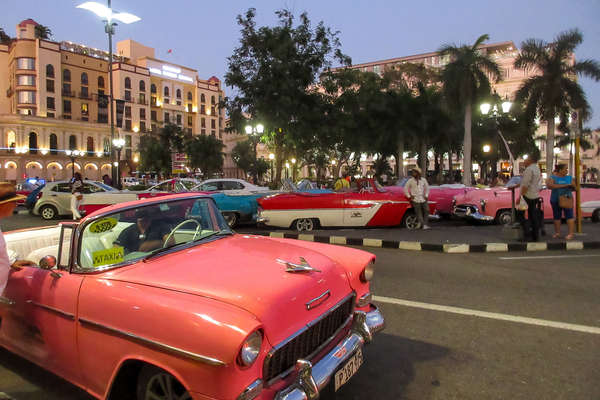The first settlers of Cuba were the Guanajatabey people who came to the island sometime between 5300 BC to 1000 BC. When the Spanish arrived, their population was around 100,000 and they practiced a mixture of hunting, gathering and farming.
Although discovered by Columbus on his first voyage to the New World in 1492, the island's coastal area was not fully mapped until 1509. In 1511 Diego Velazquez de Cuellar set out with three ships from Hispaniola to found the first Spanish settlement of Baracoa. African slaves were brought in to cultivate the island's main resources of sugar and tobacco. Interestingly, the sugar trade did not explode until the 19th century after Spain reduced its trade regulations. This boom lasted until the 1880s. Also throughout the 19th century, the ideas of freedom and independence started to grow in Cuba.
With the assistance of people in the United States, Cuban freedom fighters, earlier expelled from Cuba, returned with three ships heavily loaded with soldiers and weapons. The war raged for three years until the US Battleship Maine was destroyed while docked in the Havana harbour. After this, the US government decided to back the rebels. Within a few months the US took over Cuba from the Spanish. The economy quickly grew and the first elections were held in 1900, although very few people got to vote. In 1901 the Platt Amendment was passed which defined USA-Cuban relations until 1934. This amendment placed many unfair restrictions on Cuba, keeping Cuba a de-facto colony of the USA. Presidents changed quickly in Cuba until the military coup of Batista in 1933. Encouraged by the Americans, Batista took over the government and controlled a series of puppet presidents. He was elected in 1940 and ousted in 1944. In 1952 he returned to power again with a coup. After this coup the revolutionary Fidel Castro started an uprising, which failed causing him to flee the country. In 1956 Castro returned, landing with a boat (the Granma) to start a revolutionary force in the mountains. His patience was rewarded when on January 1, 1959 his forces overturned the government of Batista.
Castro took firm leadership of the country, and founded a communist state on the island, making Cuba an instant enemy of the USA. In 1960 the communists started to nationalize many factories and private property. A year later a group of Cuban exiles, backed by the USA, tried to overthrow Castro's regime by invading the country at the Bay of Pigs. The already bad relationship between Cuba and the USA, led to the Cuban Missile Crisis in 1962, when the US demanded the immediate withdrawal of Soviet missiles placed on Cuba.
Economically, Cuba was not doing well, something even Fidel Castro admitted in the early 1970's. In the mid-1970's economical reforms were carried out. Due to the cold war with the US, the Cuban economy suffered greatly during the 1990s after the fall of the USSR, leading to the slow dilapidation of some historic sites. The faltering economy forced the Cuban government to refocus on tourism, as well as changing other policies. It became possible for Cubans to own their own guesthouses. Cuba promoted foreign investment, leading to the emergence of dozens of new joint ventures between the Cuban state and foreign investors. The changing policies saw a massive turnaround in the Cuban economy.
